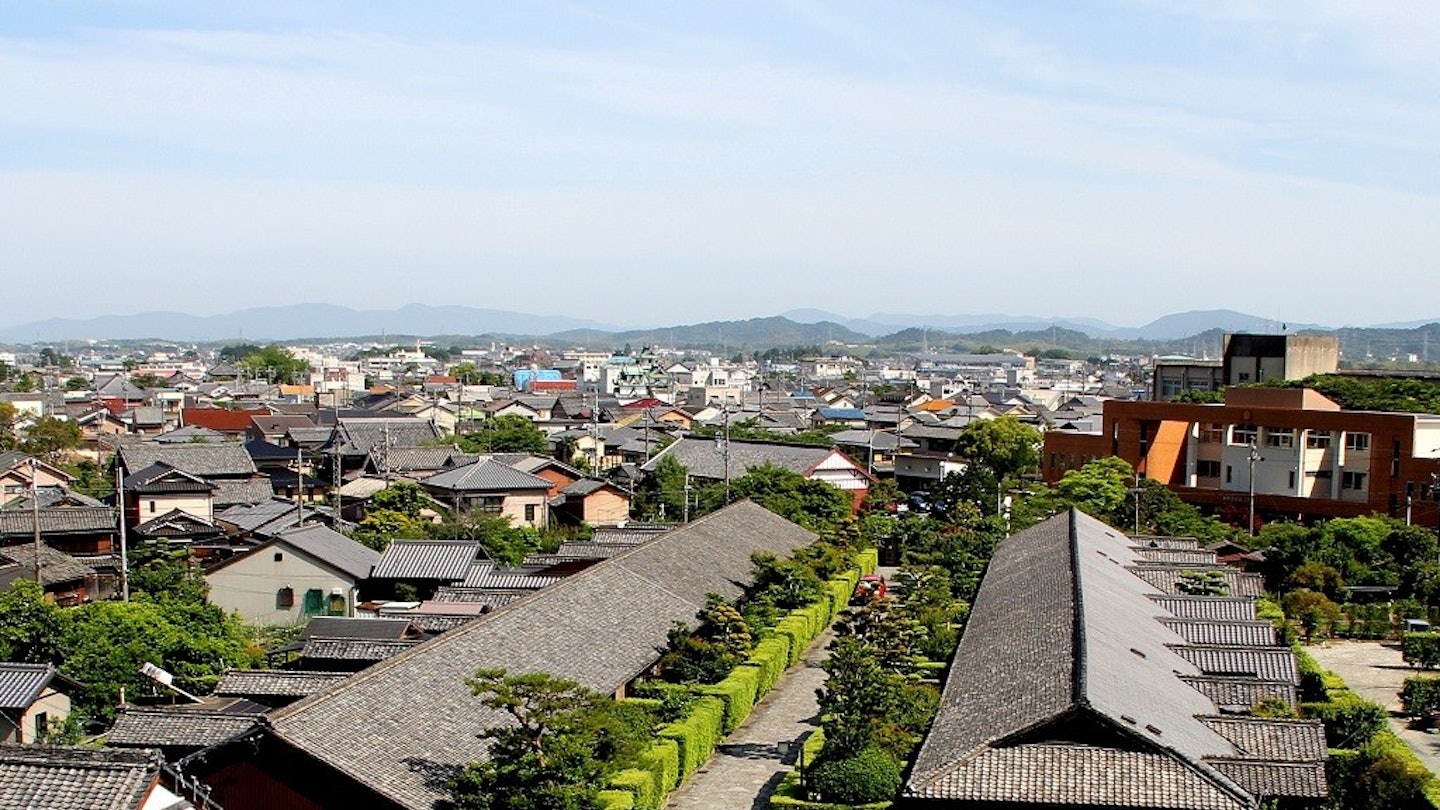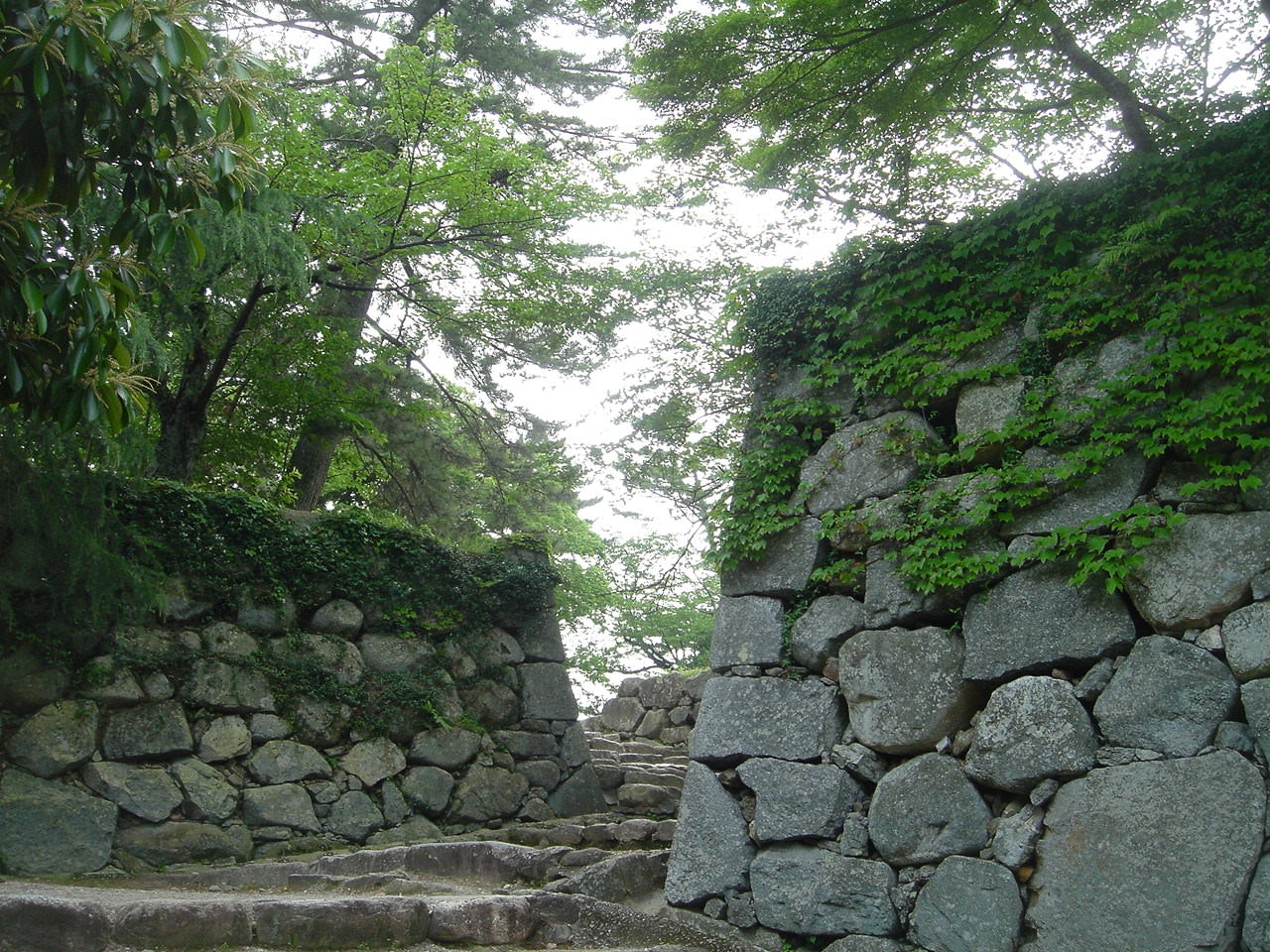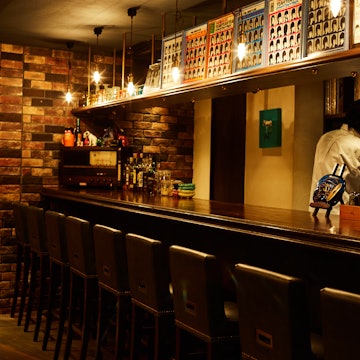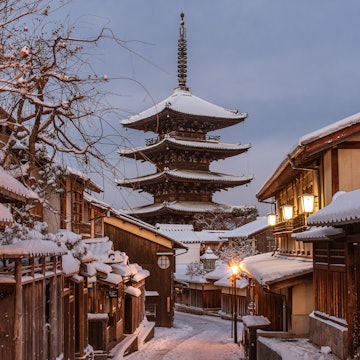

With so much keeping travellers occupied in nearby Kyoto and Osaka, it’s not surprising Matsusaka is often overlooked. But while Japan’s star cities may dazzle visitors, this unassuming slice of Kansai quietly pleases those seeking a detour off the tourist trail.
Wander castle ruins, hike to a mountain-top temple, dine on some of the world’s best beef, and sleep soundly under the roof of an historic inn: just a few of the highlights of a day or two in Matsusaka. Beef fans may want to stay for more.

Castle ruins and history
Matsusaka-jō (Matsusaka Castle) was built in 1588 and was in use throughout the Edo period, but today all that remains are the large stones of the foundation, stairways and crumbling walls. The atmospheric ruins have views over the city and are home to a park and garden – in spring the old grey walls are brightened with the blush of cherry blossoms.

Near the castle is Gojoban Yashiki, a cobbled street lined with the former homes of samurai castle guards. The traditional wooden houses are in use, with many of the descendants of samurai still living here – one residence opens up so visitors can poke around in the well-preserved rooms where a few artefacts are on display.

For more of Matsusaka’s history, visit the museum Hasegawa estate – home of a former wealthy cotton merchant – to see how the other half lived in Edo-era Japan. Browse the diaries, hand-drawn maps, medical paraphernalia and artworks of prolific scholar Motoori Norinaga at the museum dedicated to his life (norinagakinenkan.com). Or take the train four stops to Oka station to stroll around the quiet streets of Matsusaka’s historic Izawa district. It's possible to look inside the Takegawa merchant estate – known in particular for its tea house; contact the Matsusaka Tourism Assocation (info@matsusaka-kanko.com) to make arrangements.
Cotton immersion
There are records of cotton weaving in Matsusaka from as far back as the 5th century and cotton goods are still made here in the distinctive indigo-coloured striped designs for which the city is known. To learn more, drop by the Matsusaka Cotton Center (matsusakamomen.com), where you can see local aficionados working on traditional wooden looms, and browse the shop for all manner of cotton clothing, hats, bags and accessories, as well as lengths of woven cotton itself. To weave your own coaster costs ¥1300 – it’s best to email (info@matsusakamomen.com) and reserve a go on the loom if planning on doing this on a weekend.

You can even wrap yourself in Matsusaka cotton by hiring a kimono. The kimonos at Kirakuya (r.goope.jp/kirakuya2015) are specially designed to be ‘easy to wear’, so they can be quickly put on without the usual lengthy process of swathing in multiple layers and ties. The charming owners will help you into the kimono of your choice, complete the outfit with hair ornament and traditional geta shoes, and let you totter around town for a couple of hours for ¥2000. There are kimonos for the guys, too (¥3000).
A spiritual challenge
When sightseeing in Japan, one temple can start to blur into the next, but Ibuta-ji takes care of temple fatigue with a hike that leads up to a mountaintop main hall. Ibuta-ji (plala.or.jp/ibutaji) was established some 1300 years ago as a sort of training centre – the hike, which includes a short but steep scramble up a rock face, is part of a spiritual challenge for monks, meant to focus the mind in the moment.

The Iwaya hall is an impressive sight, tucked beneath a rocky overhang (which you can also climb on top of) and with views of the surrounding wooded hills and valleys. The full hike loop takes about two hours, but you can just go up to the hall and back in under an hour. The temple is a 40-minute drive inland from Matsusaka city centre; the mountain entrance fee is ¥500.

Well-timed tea
Mie Prefecture is the third-largest tea-producing region in Japan and the rolling hills around Matsusaka are fertile ground for a number of plantations. To try the local brew, stop in at Shinryoku Sabō tea shop (shinsabo.com) about 40 minutes’ drive from Matsusaka right in the middle of tea country. Shinryoku Sabō once received the Emperor’s trophy award and they take their green tea seriously here – the order comes with step-by-step instructions (in English) for how to steep, pour and savour the tea, and an hourglass to help achieve optimal timing. There are cakes and sweets on the menu that are almost too pretty to eat.

Meaty heaven
Kobe beef has international brand recognition, but within Japan the beef raised in Matsusaka is just as well known for its traditional farming methods, excellent quality, and melt-in-the-mouth marbled texture. You’d be hard pressed to find a restaurant or pub in Matsusaka that doesn’t have some beef on the menu, but Wadakin (e-wadakin.co.jp) is one of the best for sophisticated Japanese hospitality alongside perfectly prepared steak or sukiyaki (reservations highly recommended).

Other options abound: fine-dining Gyugin (gyugin-honten.co.jp) also has a more casual lunch spot (called Yōshokuya Gyugin), where you can try beef in curry, hayashi and burger form; and at Isshobin (issyoubin.com) you can try conveyor-belt beef – select a plate of fresh meat as it trundles by and grill it at the table. If red meat isn’t your thing, there’s always chicken at bustling, family-friendly yakitoriya (grilled chicken restaurant) Maeshima Shokudō (ms1.mctv.ne.jp/maeshima-syokudo), a 20-minute drive out of town and a handy pit stop if you’re heading to Ibuta-ji.

Traditional sleeps
A stay in a ryokan is often a highlight of a trip to Japan. Matsusaka is a great place to get that traditional accommodation experience for fewer yen – and with less of the fussiness – than at some of the more well-known ryokan in Kyoto. Standout options include Taiya Ryokan, in business over 230 years; and Yachiyo Ryokan (yachiyo-web.co.jp), a mere 90 years old and specialising in beef kaiseki (multicourse meal) dinners for its guests.

Make it happen
Matsusaka is within Mie Prefecture, southeast Kansai. The city is served by both JR and Kintetsu trains, around 90 minutes by express service from Osaka or Nagoya, and 120 minutes from Kyoto. It is also connected to Chubu International Airport (Nagoya) by high-speed boat (about 70 minutes). Matsusaka is also a great base for exploring more of the prefecture and is just 10 minutes by train from the grand Shintō shrine Ise-jingū.
The city centre is compact and flat, with most accommodation and city sights reachable on foot, but the best way to explore the areas further afield is with a car. Nippon Rent a Car (nipponrentacar.co.jp) and Toyota Rent a Car (rent.toyota.co.jp) both have offices near the station.
While there is English information available at some sights, it can be limited – a volunteer guide is recommended for a personalised tour with an enthusiastic English-speaking local (matsusaka-kanko.com/eng-guide); be sure to arrange this at least three days in advance.
Laura Crawford travelled to Matsusaka with support from the City of Matsusaka and the Mie Prefecture Tourism Bureau. Lonely Planet contributors do not accept freebies in exchange for positive coverage.















